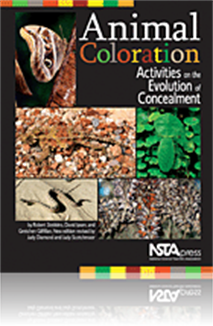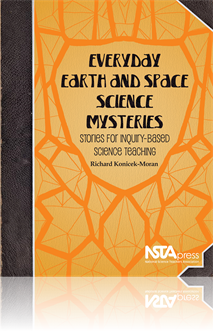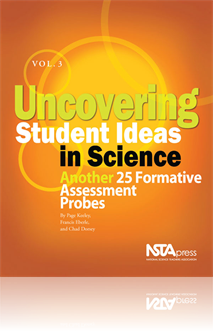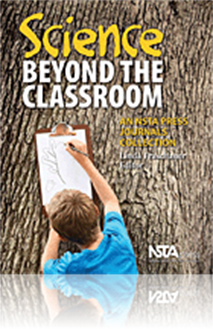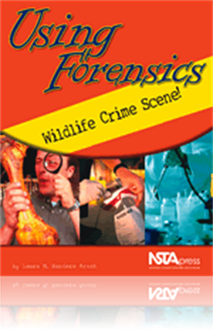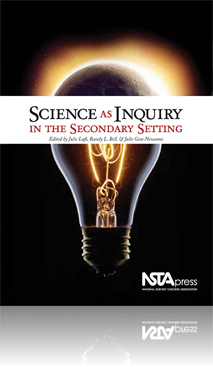All Book Chapters
Book Chapter
This activity introduces students to an animal that is to be the subject of much experimentation by them. Because most fish have a relatively simple form and exhibit a wide variety of colors and patterns, they prove to be an excellent animal for expe...
Book Chapter
In their study of animal coloration, the students will be “hiding” animals from themselves. If the students cannot easily spot a fish, they may assume that the fish will be overlooked by another fish or by a preying bird or mammal. If a moth esca...
Book Chapter
This chapter introduces an especially important subject in the concealment of animals—countershading. One observes many animals with colors that match the general color of their usual backgrounds. Many leaf-eating insects appear green, for example,...
Book Chapter
Concealment of Give-Away Parts
The outline of an animal is not the only feature that might give it away. Often some part of it, perhaps its eyes or its legs or its tail, might also be a clue. In this activity, these parts are called giveaway parts. The function of the first activi...
Book Chapter
A previous activity suggested the importance of behavior to an animal with coincident coloration. If the stripe-legged frog fails to fold its legs, the disruptive markings on them lose much of their effectiveness. If, when at rest, a moth with coinci...
Book Chapter
In this activity, students will be asked to review their experiments from the previous chapters. Throughout this book, the students have studied animal coloration through the use of models, rather than by investigating living animals. This activity g...
Book Chapter
The apparent daily motion of the Moon and other celestial objects through the sky is a major science concept. This story is designed to call attention to the changes in position and shape of the Moon over time. Its purpose is to motivate students to ...
Book Chapter
The purpose of this assessment probe is to elicit students’ ideas about the properties of atoms. The probe is designed to determine whether students can distinguish between the microscopic properties of an atom and the macroscopic properties of a s...
Book Chapter
Science Beyond the Curriculum: Projects and Challenges
The National Science Education Standards and Benchmarks for Science Literacy stress the importance of creating science experiences that are linked to the real world, something that is familiar to students. Projects and challenges hold the potential f...
Book Chapter
Crime scene evidence can include strands of human hair, an unidentified animal pelt, or animal hair on the ground near a suspected poaching. Hairs that look alike with the naked eye can become distinctly different when viewed under the microscope. In...
Book Chapter
What Is Inquiry? A Framework for Thinking About Authentic Scientific Practice in the Classroom
In this chapter, a framework is suggested for organizing teacher thinking about inquiry and prioritizing the wide assortment of activities teachers typically use to familiarize their students with the processes of science. This framework articulates ...
Book Chapter
Assessing Science as Inquiry in the Classroom
Assessments of inquiry should align with what we know about learning and should be balanced and authentic. That is, they should include all the important features of inquiry, not just those easy to assess. This approach helps ensure that all students...
Book Chapter
Inquiry and Scientific Explanations: Helping Students Use Evidence and Reasoning
This chapter describes the importance of scientific explanation in inquiry, common difficulties students have in justifying their claims, and a suggested instructional approach for supporting students in writing scientific explanations. It then discu...
Book Chapter
Historical Development of Teaching Science as Inquiry
This chapter examines four periods in the history of science education. In particular it looks at how societal pressures brought about the teaching of science as inquiry in each period and how educators, cognitive psychologists, and scientists have r...
Book Chapter
Inquiry experiences in the Earth sciences are often indirect, because direct experimentation, such as is used in the physical sciences, is typically not possible. To support inquiry in the Earth sciences it is important to consider the components of ...


